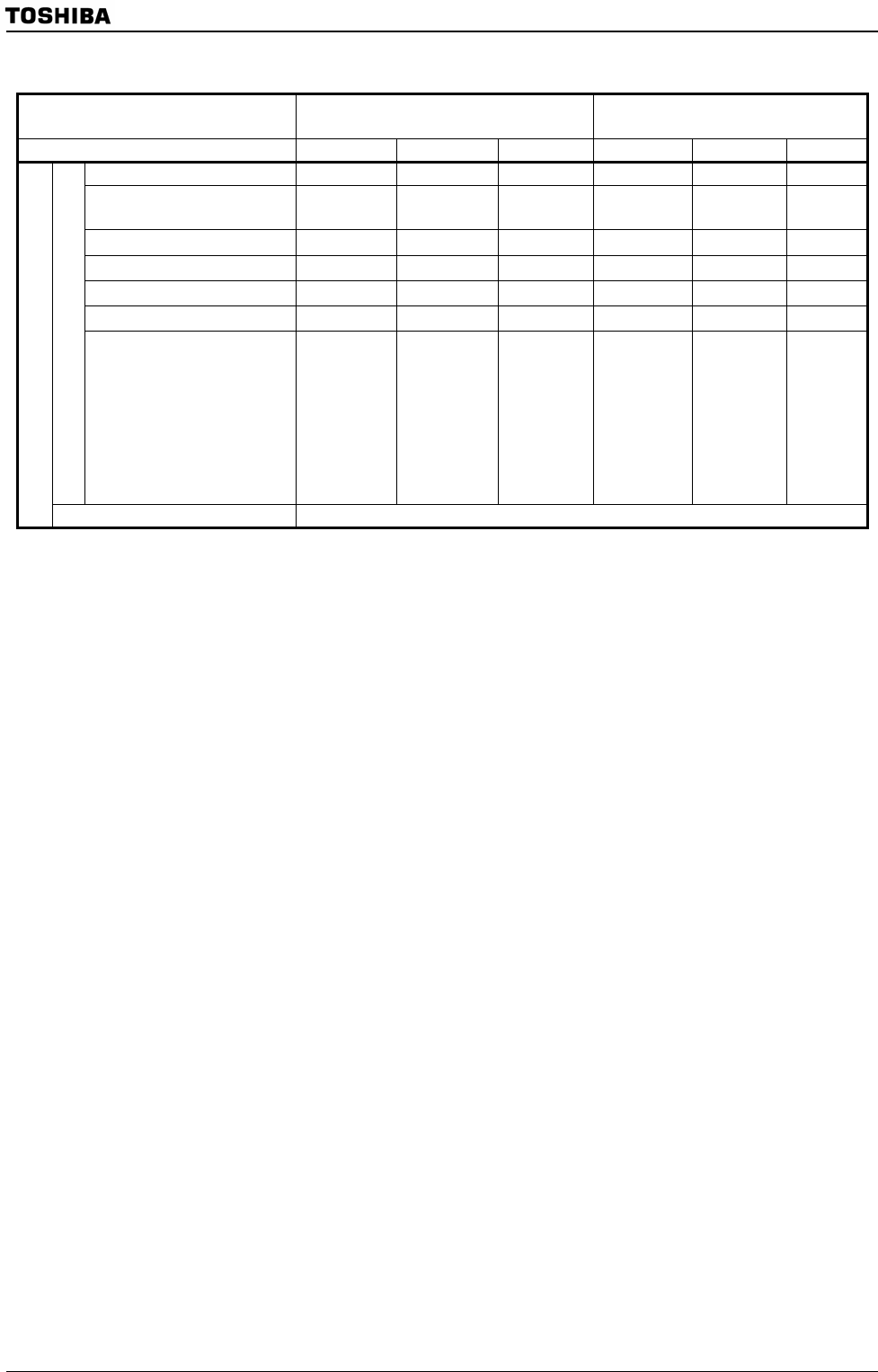
TMP92CZ26A
92CZ26A-36
Table 3.3.4 Source of Halt state clearance and Halt clearance operation
Status of Received Interrupt
Interrupt Enabled
(interrupt level) ≥ (interrupt mask)
Interrupt Disabled
(interrupt level) < (interrupt mask)
Halt mode IDLE2 IDLE1 STOP IDLE2 IDLE1 STOP
INTWDT
× × − − −
INT0 to 5 (Note1)
INTKEY
*1
{ { {
*1
INTUSB
*2
× { {
*2
×
INT6 to 7(PORT) (Note1)
*1
{ { {
*1
INT6 to 7(TMRB)
× × × × ×
INTALM, INTRTC
× { { ×
Interrupt
INTTA0 to 7, INTTP0
INTTB00 to 01, INTTB10 to 11
INTRX,INTTX, INTSBI
INTI2S0 to 1, INTLCD,
INTAD, INTADHP
INTSPIRX,INTSPITX
INTRSC, INTRDY
INTDMA0 to 5
× × × × ×
Source of Halt state clearance
RESET Reset initializes the LSI
: After clearing the Halt mode, CPU starts interrupt processing.
{: After clearing the Halt mode, CPU resumes executing starting from instruction following the HALT instruction.
×: It can not be used to release the halt mode.
−: The priority level (interrupt request level) of non-maskable interrupts is fixed to 7, the highest priority level. There is
not this combination type.
*1: Releasing the halt mode is executed after passing the warmming-up time.
*2: 6 interrupts of all 24 INTUSB sources can release Halt state from IDLE1 mode. Therefore, the system of low
power dissipation can be built. However, the way of use is limited as below.
• Shift to IDLE1 mode :
Execute Halt instruction when the flag of INT_SUS or INT_CLKSTOP is “1” ( SUSPEND state )
• Release from IDLE1 mode :
Release Halt state by the request of INT_RESUME or INT_CLKON ( request of release SUSPEND )
Release Halt state by the request of INT_URST_STR or INT_URST_END ( request of RESET )
Note1: When the Halt mode is cleared by an INT0 interrupt of the level mode in the interrupt enabled status, hold level
H until starting interrupt processing. If level L is set before holding level L, interrupt processing is correctly
started.


















